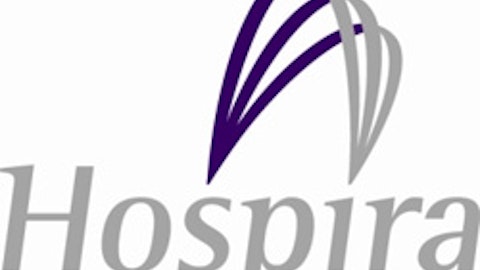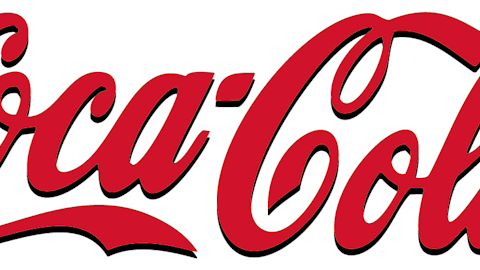After World War Two, The United States of America witnessed the largest population increase in its history. Birth rates reached 25 per 1000 people, while death rates hovered at 9.5 per 1000, resulting in what came to be known as the baby boomer generation. Born between 1946 and 1964, the age range of this generation is currently between 49 years and 67.

The oldest of this generation have already hit the retirement age in the United States, and the youngest ones are not that far behind. So what type of company and which type of product will benefit from this Great Retirement mega-trend?
Rewinding the clock
There is a paragraph in Kotler Keller Marketing Management which reads
With many baby boomers moving into their 60s and even the last and younger wave bearing down on 50; demand has exploded for products that turn back the hand of time. According to one survey nearly one in five baby boomers was actively resisting the aging process driven by the mantra “50 is the new 30.” … Boomers are less likely to see retirement as the beginning of the end and see it as a new chapter in their lives with new activities, careers, interests, and relationships.
So, according to the above, products and services that can “turn back the hand of time” are going to face increased demand in the coming years.
Joint Replacement is one such service. It is often said that no single procedure can impact the quality of life as much as a joint replacement.
Mark Figgie chief of the Surgical Arthritis Service at Hospital for Special Surgery in New York said
Osteoarthritis, which causes the cartilage in joints to wear away, is the usual culprit when knee pain has made walking painful. Even sleeping can be very uncomfortable—sometimes unbearably so—because a day’s worth of moving around has inflamed the joint. And being unable to enjoy the activities you once did—say, golf or cycling—also can be a quality-of-life factor
One boomer who underwent the surgery once said “The idea of getting old and not being able to function by yourself is terrifying — I’d go nuts.”
A numbers explosion
600,000 knee surgeries are conducted annually in the United States. That represents nearly a 161% increase from 2 decades ago. The average age for conducting knee surgery in the US is currently 66 years old, a drop from 68 a decade earlier. This means that the oldest of the baby boomers are currently hitting the average age where knee surgery is conducted.
Some experts predict that knee surgery procedures may increase to 3.5 million by the year 2030. Total hip surgery is expected to increase to 570,000 in the same time frame from a current count of 200,000.
As people get older they are more likely to get this operation. A study showed that 4.9% of women and 4.1% of men aged 60 to 69 have had at least one knee replaced. The numbers jumped to 8.2% in women and 7.1% in men aged 70 to 79. The fact that a very large segment of the population is about to hit their 70s is a very strong tailwind for these operations.
The leading companies commonly associated with knee & hip replacement include Zimmer Holdings, Inc. (NYSE:ZMH), Johnson & Johnson (NYSE:JNJ), and Stryker Corporation (NYSE:SYK) .
Of the three companies mentioned above Zimmer Holdings, Inc. (NYSE:ZMH) is the most focused on joint replacement and it also happens to be the leader in both knee & hip implants with a whopping 26% market share. It generated $4.5 billion in sales last year with 70% of that coming from knee & hip implants. Other business segments include extremities, trauma, dental, spine, and surgical.
J&J is a giant healthcare conglomerate with exposure to everything from oncology to mouthwash. Its exposure to the knee and hip market is through its subsidiary Depuy Synthes which trails Zimmer Holdings, Inc. (NYSE:ZMH) in joint replacement. Knee & hip implants are a part of J&J’s Orthopedics segment which last year generated $7.8 billion, representing 34.3% and 11.6% of its Medical Devices and Diagnostic segment and its total corporate revenue, respectively.
Stryker Corporation (NYSE:SYK), a medical equipment manufacturer which generated $8.7 billion in revenue in 2012, has 3 business segments: Reconstructive, Medsurge, and NeuroTechnology & Spine, with each generating $3.8 billion, $3.3 billion and $1.6 billion, respectively, in 2012. Knee and hip implants, part of the reconstructive segment, accounted for 16% and 14% of total revenue, respectively.
Even though Zimmer Holdings, Inc. (NYSE:ZMH) is currently the market leader, it is currently not a fast growing company with revenue growth of only 0.44% and 0.54% in the last 2 years. J&J and Stryker Corporation (NYSE:SYK) offer traditional knee and hip implant as part of their overall healthcare portfolio. Their size and exposure to several business segments makes them a more conservative and more stable investment.
There is, however, a newer smaller and more focused contender that is armed with the latest in cutting edge technology which may be the best bet for capturing growth in this market.
A better way
While total knee replacement, or TKR, is the standard of treating osteoarthritis of the knee, there is another operation called partial knee resurfacing, or PKR, where only the arthritic region of the knee is resurfaced. Think of it as treating a cavity rather than removing the entire tooth. It is a good alternative for people suffering from early and mid-stage osteoarthritis, or OA.
Partial knee resurfacing is made possible with the use of MAKO Surgical Corp. (NASDAQ:MAKO) RIO surgical robots. Last year, 10,204 MAKOplasty procedures were conducted with the RIO system, netting the company $51 million in procedural revenue. The company is usually considered to be a younger sibling to Intuitive Surgical, Inc. (NASDAQ:ISRG), the company which put robotic surgery on the medical map a decade earlier with its da Vinci surgical robots.
While MAKO will benefit from the aging baby boomers, there is another trend that may help increase demand for PKR procedures. More and more patients are opting to get knee surgery at a younger age. These patients are likely to have higher expectations of mobility after surgery. Not to mention only a small fraction of people with osteoarthritis choose to under-go TKR. If a more benign procedure is available, it might encourage more sufferers of osteoarthritis to seek surgery.
Catalysts on the horizon
MAKO isn’t just about partial knee resurfacing; the company added a total hip arthoplasty application to the RIO in September 2011 and today 63% of its RIO systems are equipped to enable THA procedures. The company last November also announced that it is also working on a total knee solution. There is also speculation that the company may be planning to offer shoulder replacement solutions for the RIO.
If all these procedures come on-line it will help increase utilization and convince more hospitals and clinics to invest in system installations. It will also help MAKO to capture more of the booming joint replacement market.
This has so far been a largely American-centric article, but the U.S.A is actually the youngest of the industrialized nations. There should be great market opportunities for orthopedic companies in Western Europe, Japan, and even China going forward. Most of MAKO’s RIOs have been installed Stateside, however there are 6 RIOs that have been installed outside the US. If the company can prove itself in the US, the rest of the world should follow.
MAKO has also been successful in defending its Intellectual Property as can be seen with its infringement dispute against British company Stanmore Implants Worldwide. Stanmore decided to drop out of robotic surgery and MAKO was able to purchase Stanmore on the cheap for under $1 million thus removing a competitor permanently. MAKO’s traditional competitors have also had their hands full lately with law suits and product recalls.
Conclusion
The aging of the baby boomer generation offers a great opportunity for companies in the orthopedic space. The cutting-edge technology offered by MAKO combined with its small market cap can offer early investors in this company huge returns going forward if things turn out favorably for the company.
Mohammed Shaaban has no position in any stocks mentioned. The Motley Fool recommends Johnson & Johnson (NYSE:JNJ) and MAKO Surgical Corp. (NASDAQ:MAKO) . The Motley Fool owns shares of Johnson & Johnson (NYSE:JNJ) and Zimmer Holdings, Inc. (NYSE:ZMH).
The article The Market For This Company is Set to Explode originally appeared on Fool.com.
Mohammed is a member of The Motley Fool Blog Network — entries represent the personal opinion of the blogger and are not formally edited.
Copyright © 1995 – 2013 The Motley Fool, LLC. All rights reserved. The Motley Fool has a disclosure policy.





